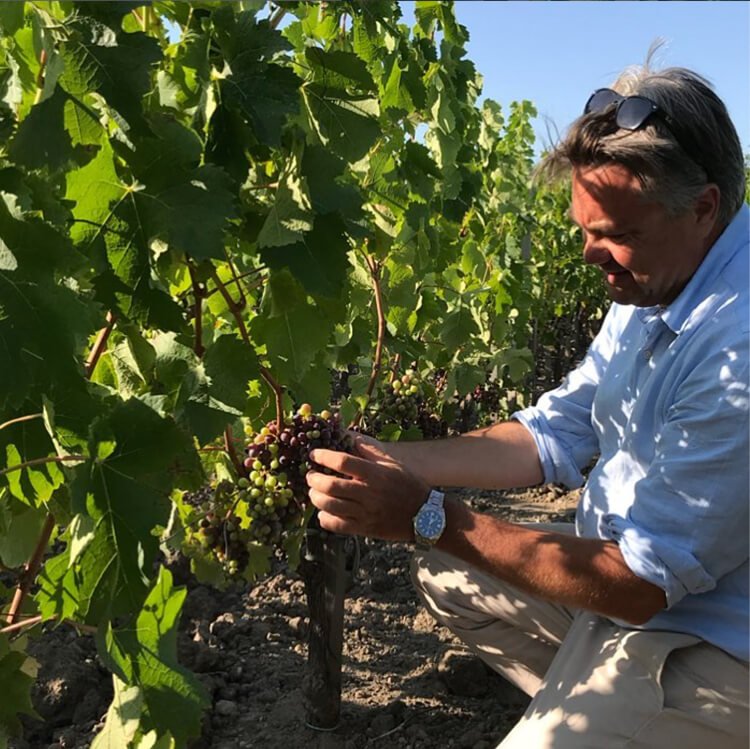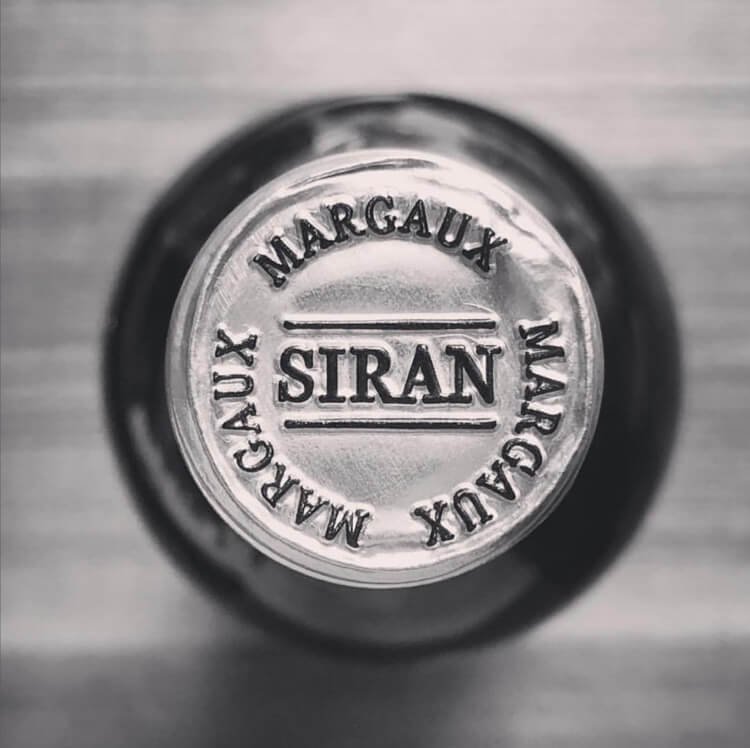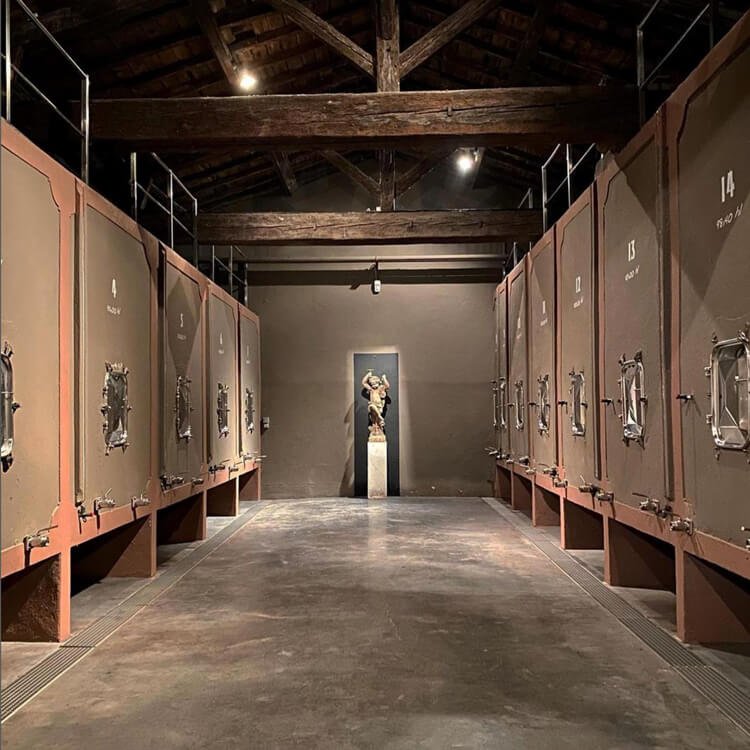▻ Edouard Miailhe
Elin McCoy in conversation with Edouard Miailhe
Episode Summary:-
Edouard Miailhe is the sixth generation of his family to be at the head of Château Siran, which is situated in the Margaux appellation, and though celebrated, is not classified. His grandfather owned Château Pichon Lalande, Château Palmer and Château Siran, but in the 1970s, when the assets were split up between family members, the wine estates were not of the value they are today, and his father inherited Siran while his aunt, May-Eliane de Lencquesaing, inherited Pichon Lalande. Elin McCoy talks to Edouard for our series “Great Wine Lives” about his life at Siran, its history, his role as head of the winegrowers’ association of Margaux, and his plans for the future.
He confesses his love of wine came when he was in his late 20s and early 30s. At the time, he was drinking Bordeaux from some of the best vintages, such as 1983, ‘85, ‘86 and ’89, as well as wines from other regions and countries. He did not live at the château as a child, but rather in the city of Bordeaux, followed by boarding school in Paris. Family links to the Philippines led to him living there with his wife and four children, where he worked in finance and property (he even printed money for the Central Bank of the Philippines). In 2007 he returned to take over running Siran from his parents, and in 2014 after commuting between France and the Philippines, his family joined him.
Edouard’s family bought Château Siran from the great-grandparents of Toulouse-Lautrec in 1859. The family were royalists and opposed to Napoleon III, who was responsible for the 1855 Exposition Universelle de Paris, which led to the renowned 1855 classification, and as a result of their enmity, Château Siran was never classified. In the 1970s, when Edouard’s grandfather split his inheritance amongst the family, the wine estates were costing money, not making it. Edouard notes that it was only in the late ‘80s that the wineries started becoming value assets. (In 1937, when his grandfather purchased Château Palmer it was at a reverse auction--as the price decreased, the first person to put up their hand bought the property.)
Siran has always had a high proportion of Merlot and Petit Verdot in the blend, Edouard reveals. The reason is that his grandfather’s brother, who was in charge of viticulture, loved the roundness of the Merlot grape and the profile of Petit Verdot. Emile Peynaud used to be the consultant, but from 2014 Hubert de Boüard has consulted for the property, and Edouard gives credit to him for the improvements made. One thing that has not changed is the lack of chemicals used on the land: Siran has never had herbicides.
““All the people who know me know that Siran is part of my DNA.””
Another singular aspect of the chateau is tourism. Edouard’s parents opened the doors of Siran to visitors early on, and today over 10,000 people enjoy visiting each year. One of the unusual buildings to greet them is a nuclear bunker, which contains museum artifacts going back to 300 BC, as well as a broad collection of wine, the oldest being 1912. (His father built the bunker at the time of the Cold War, when a nuclear plant was built across the river at Blaye.)
One of his favourite vintages is 1955. He had a chance to taste it when he was alerted to a restaurant in the Napa Valley with a great list of old vintages of Siran. It turned out that the owner had bought the official cellar of genuine wine belonging to Rudi Kurniawan, the Indonesian forger who had been convicted of wine fraud and fakery. Elin reminds him that Siran was used in Rudi’s recipe for First Growth wines! Edouard also remarks on the vivacity of the wines of the ‘20s, with 1929 being his favourite vintage. “There is this miracle in some vintages that makes it never age,” he says.
The Margaux appellation has been blessed by having the first growth Château Margaux amongst them, giving instant name recognition to other local properties. “Château Margaux has been the best ambassador for the appellation for 400 years,” Edouard states. It is a diverse appellation in terms of soil, and the fact that it is based on four villages, with 61 producers, and 21 classified growths. There are also large and small properties, with some estates only being a few hectares. The taste of Margaux wines is very delicate, not too powerful, which he characterizes as “a velvety, silky style.” He praises Gonzague Lurton, who was the previous head of the association, for spearheading the biodiversity project, and where the appellation undertook a census of how many birds, bats and bees were in the area, to begin to measure its progress. Next year they will repeat the survey and hope to see an improvement.
He shares with Elin his hope that one of his four children will eventually take over the estate, and though he is not classified, he does not believe it would be helpful to redo the 1855 classification. He is most proud of putting together a charity foundation for Margaux whereby the vintners give money every year to the four villages. He has also reintroduced a dinner at the end of the harvest, which brings everyone together. Future plans? Edouard declares he wants to make a white wine. There was one on the menus of Château Siran in the ‘20s, but no one can remember the cépage. Clearly, despite the illustrious historic past of his estate, Edouard is all about the present and the future.
Running Order:-
-
0.00 – 19.20
“All the people who know me know that Siran is part of my DNA.”
– The family’s history – owning Châteaux Siran, Palmer and Pichon Lalande.
– Growing up in Bordeaux.
– Two families owning Ch Siran in its entire history.
– How châteaux lost money in the 1970s.
– The Miailhe connection to the Philippines. -
19.20 – 37.10
“There is this miracle in some vintages that makes it never age.”
– The role of Petit Verdot and Merlot at Siran.
– Emile Peynaud and Hubert de Boüard as consultants.
– Wine tourism at Siran, and the nuclear bunker.
– The greatness of the wines from the 1920s.
– Discovering Siran from Rudi Kurniawan’s cellar, in Napa Valley. -
37.11 – 01.10
“Bordeaux can’t count on China anymore.”
– The great vintages of Siran.
– The diversity of the Margaux commune.
– Château Margaux’s ambassadorial role for the appellation.
– The taste of Margaux wines.
– Edouard’s most proud achievements and regrets, and future plans.
RELATED POSTS
Keep up with our adventures in wine










Hannes Myburg talks to John Stimfig about running the iconic South African Meerlust estate, which is celebrating its 50th vintage.